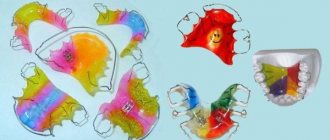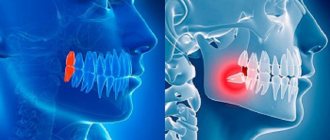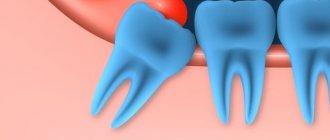Analgesics and NSAIDs are effective in the treatment of acute back pain. According to the most common point of view, the prescription of centrally acting muscle relaxants increases the effectiveness of treatment, but is accompanied by a high risk of developing adverse events, primarily associated with the sedative effect of the drugs.
However, in a placebo-controlled study, Benjamin W., Andrew A., (2015) failed to demonstrate the effect of the addition of a centrally acting muscle relaxant (cyclobenzaprine) or a combination of paracetamol with an opioid analgesic (oxycodone) during treatment with naproxen.
There are a wider range of medications available for the treatment of chronic back pain, but clinical trial evidence for their benefit is less convincing.
Nonsteroidal anti-inflammatory drugs
Choice of drug
NSAIDs are effective in patients with low back pain, however, the improvement in the general condition of the patient associated with their use is insignificant. Paracetamol (acetaminophen) or NSAIDs are recommended as first-line drugs. The first, slightly inferior to NSAIDs in effectiveness, is cheaper and safer in most groups of patients (does not affect blood clotting or blood pressure regulation). For acute back pain in patients without an increased risk of adverse events, NSAIDs are prescribed for up to 4 weeks. No differences in the effectiveness of individual NSAID drugs have been shown in randomized clinical trials.
The most acceptable drugs are ibuprofen (200-400-600 mg up to 4 times a day), and naproxen (200-500 mg x 2 times a day), both drugs are well studied and are quite safe for short-term use. In our country, due to aggressive advertising, the prescription of selective COX-2 inhibitors - oxicams (meloxicam, lornoxicam), sulfonanilides (nimesulide) - is common. The presence of a large number of generics on the market makes these drugs accessible.
It is advisable to use drugs in minimal doses that produce a sufficient analgesic effect from the patient’s point of view. In the recommendation for taking the drug for each individual patient, indicate the permissible dosage range and maximum duration of use. To create realistic expectations, it is important to inform the patient that most often taking medications reduces pain, but does not eliminate pain completely. In most cases, in patients without concomitant affective disorders, the tolerance of back pain is satisfactory, the severity of the pain syndrome is moderate.
Security questions
Frequent use of NSAIDs and long courses of drug administration place great emphasis on patient safety. With short-term use, there are risks of damage to the gastrointestinal tract, adverse events from the cardiovascular system, blood system and allergic reactions:
Adverse events from the gastrointestinal tract
Damage to the gastrointestinal tract is the most common complication of taking NSAIDs. It has been shown that for every $1 spent on NSAID treatment, $0.66 to $1.25 is spent on treating gastrointestinal complications
Taking medications reduces the protective properties of the gastric mucosa. The mechanism of the ulcerogenic effect of NSAIDs is due to two independent mechanisms:
- local damage to the gastric mucosa;
- systemic depletion of cytoprotective prostaglandins. NSAIDs, as weak acids, are present in the acidic environment of gastric juice in the form of lipophilic neutral molecules. They slowly penetrate the epithelial cells of the stomach and accumulate in the neutral environment of the cytoplasm. The action of the drugs contributes to the disorganization of gastric surfactant, disrupts the composition of phospholipids, glycolipids and glycoproteins of epithelial cells, uncouples oxidative phosphorylation, causing energy deficiency in epithelial cells.
In the American College of Gastroenterology Lanza FL, Chan FK, Quigley EM, Practice Parameters Committee of the American College of Gastroenterology. Guidelines for prevention of NSAID-related ulcer complications. Am J Gastroenterol. 2009;104( 3):728.) the following risk assessment model is proposed:
Ketorol
The drug is also intended for the symptomatic elimination of pain, fever and inflammatory processes, but its effect is ensured by another active component - ketorolac.
The substance is a derivative of acetic acid. Through its effect on both types of COX, it inhibits the metabolism of arachidonic acid and the associated synthesis of prostaglandins.
When used externally, it reduces or completely eliminates pain at the treatment site. As a result, the condition of the joints in motion and at rest improves, morning stiffness and swelling disappear, and motor activity increases.
The drug is recommended for use in moderate and severe pain syndromes of various origins. Indications for use:
- Pain after injuries, operations
- Headache, toothache
- Alleviating the condition of cancer patients
- Myalgia
- Arthralgia
- Exacerbation of radiculitis
- Neuralgia
- Pain due to dislocations, bruises, sprains.
The drug is produced in the form of tablets for oral administration, injection solution, and gel for external treatment.
Reception scheme
- Tablets: single dosage – 10 mg, frequency of administration – maximum 4 r. in a day.
- Injections: with IM - a single dosage of 10-30 mg, with IV - in a dose calculated according to the patient’s age, weight and kidney condition. The interval between injections is 4 hours.
- Gel: The drug is applied to the affected area with a 4-hour break.
Low risk
No risk factors
NSAIDs differ in the severity of their ulcerogenic effects.
Indomethacin has the highest risk of gastrointestinal complications (relative risk {RR} 2.25), followed by naproxen (RR 1.83), diclofenac (RR 1.73), piroxicam (RR 1.66), ibuprofen (RR 1.43), and meloxicam (OR 1.24).
A dose-dependent effect of the drugs was noted (Richy F, Bruyere O, Ethgen O, 2004):
Low-dose ibuprofen (RR 1.6, 95% confidence interval 0.8-3.2)
High-dose ibuprofen (RR 4.2, 95% confidence interval 1.8–9.8)
Low-dose naproxen (RR 3.7, 95% confidence interval 1.7-7.7)
Naproxen at high doses (RR 6.0, 95% confidence interval 3.0-12.2)
Low-dose indomethacin (RR 3.0, 95% confidence interval 2.2-4.2)
High-dose indomethacin (RR 7.0, 95% confidence interval 4.4-11.2)
Not included in this review, ketorolac also has a pronounced gastrotoxic effect. In one study (García Rodríguez LA, Cattaruzzi C, 1998), it was shown that the risk of developing adverse events from the gastrointestinal tract with the drug is 5.5 times higher than that of other NSAIDs. Therefore, the duration of taking the drug is limited to 5 days.
In Russia and abroad, the drug is available with a prescription.
Despite the possibility of early gastrotoxicity, in most cases it does not appear within several weeks of taking the drugs. The possibility of modifying risk factors depends on the conditions of medical care for the patient.
- Patients with a history of complicated or uncomplicated gastrointestinal ulcer disease are advised to undergo testing for H. pylori before prescribing NSAIDs or aspirin. If the result is positive, appropriate treatment is carried out (even in cases where it is assumed that the previous development of ulcers was associated with taking NSAIDs).
- It is necessary to use minimal doses of drugs, the course of treatment should be as short as possible.
- In patients with an average and high risk of complications from the gastrointestinal tract, the use of selective COX-2 inhibitors or NSAIDs in combination with antisecretory drugs: proton pump inhibitors (omeprazole 20 mg/day, esomeprazole 20 mg/day up to 6 weeks), H2 blockers is indicated -histamine receptors (ranitidine 150 mg/day once at night, famotidine 40 mg x 2 times a day). Both groups of drugs reduce the severity of dyspepsia in patients. Efficacy at recommended doses is similar.
- In patients with a high risk of complications from the gastrointestinal tract, selective COX-2 inhibitors may be prescribed in combination with antisecretory drugs
- Concomitant use of aspirin with COX-2 inhibitors completely eliminates the gastrointestinal safety benefits of the latter.
- Unexplained anemia, iron deficiency, severe dyspepsia, signs of gastrointestinal bleeding indicate a possible complication of taking NSAIDs. It is necessary to consider the possibility of performing esophagogastroduodenoscopy.
Which is more effective for toothache?
Everyone knows: if you have a toothache, the best way to get rid of it is to go to the dentist. But there are times when an urgent visit is postponed for several hours.
Ketorol can very effectively help you last until a visit to the dentist. It is able to quickly and permanently relieve even severe toothache. This drug is also used after visiting a doctor, in cases where pain remains for some time after manipulations performed on the tooth.
It should be remembered that Ketorol is very insidious and long-term use can provoke a visit not to the dentist, but to the surgeon due to the formation of a stomach ulcer. Those who have chronic stomach or intestinal problems should exercise extreme caution even with single doses.
Nise can also be used for toothache (this is evidenced by the indications in the instructions). However, as mentioned above, rapid elimination of acute pain is not one of the priorities of this drug. The effect will be short-lived when the pain is mild or moderate. It can only dull severe pain. Reviews indicate that for some people it does not work at all.
Among consumers, you can sometimes come across the opinion that due to its strong anti-inflammatory effect, you can slow down the development of pulpitis or periodontitis and avoid a visit to the dentist. This opinion is wrong. As a rule, these diseases are of an infectious nature, so the drug will not affect the course of the pathological process.
Table 1 Recommendations for the prevention of complications associated with taking NSAIDs
| Risk of gastrointestinal complications | |||
| Short | Moderate | High | |
| Low risk of cardiovascular complications | Monotherapy with NSAIDs (choosing a drug with the least ulcerogenic potential) | NSAID + proton pump inhibitor/misoprostol | If possible, alternative treatment or NSAIDs - selective COX-2 inhibitor + proton pump inhibitor / misoprostol |
| High risk of cardiovascular complications (low dose aspirin is indicated) | Naproxen + proton pump inhibitor/misoprostol | Naproxen + proton pump inhibitor/misoprostol | Avoid prescribing NSAIDs, including selective COX-2 inhibitors, use alternative treatment |
Another drug that has a sufficient gastroprotective effect is the synthetic prostaglandin E1 - misoprostol, but its use is limited by its high cost.
The protective effect of the H2-histamine receptor antagonist, famotidine, has been proven only in combination with ibuprofen. A combination drug was created, which is currently not available in Russia. However, both of its components can be purchased and taken separately. They are affordable.
It is necessary to inform the patient that even despite intense back pain, his health is not in danger. The vast majority of patients have a favorable prognosis: within 3 months, more than 90% of patients do not seek medical help again.
Less significant are complications from the urinary and central nervous systems, hepatotoxic effects of drugs:
Adverse events from the urinary system
All NSAIDs can have nephrotoxic effects. When taking drugs of this group, the following types of complications may develop: Development of acute renal failure due to spasm of renal vessels. Other mechanisms of organ damage are also possible. NSAIDs cause a moderate increase in arterial hypertension, reduce the effectiveness of antihypertensive drugs, and can cause electrolyte disturbances (hyperkalemia, hyponatremia and edema). Taking NSAIDs is associated with an increased risk of kidney cancer.
Adverse events from the cardiovascular system
All NSAIDs, both selective and non-selective, increase the risk of developing cardiovascular complications: clinical manifestations of coronary heart disease, heart failure, increased blood pressure, and the development of atrial fibrillation. Naproxen has the lowest risk of developing complications from the cardiovascular system. (Daniel H Solomon, MD, 2015). NSAIDs interact with all classes of antihypertensive drugs except calcium antagonists, reducing their effectiveness. Their use may increase blood pressure in patients (White WB. 2007). Safety issues are more relevant for patients with a high risk of cardiovascular complications (old age, long-term hypertension, constant use of antihypertensive drugs, diabetes mellitus); in patients with a low risk, they do not limit the use of drugs in this group.
Adverse events from the blood system
Neutropenia is a rare complication of taking NSAIDs and develops in less than 1% of patients; no risk factors for the development of this condition or association with taking individual drugs from this group have been established. The antiplatelet effect is associated with inhibition of COX-1, which leads to a decrease in the production of thromboxane A2. It is necessary to avoid taking NSAIDs in patients with thrombocytopenia (less than 50 x 109/l). Before surgery, drugs should be discontinued within 3-5 half-life periods. For most NSAIDs, the antiplatelet effect disappears 3 days after discontinuation. The antiplatelet effect of ibuprofen is eliminated 24 hours after discontinuation of the drug. Highly selective COX-2 inhibitors have little effect on platelet hemostasis. Concomitant use of NSAIDs and aspirin may reduce the antiplatelet effect of the latter. Interaction with warfarin leads to a significant increase in INR when taken simultaneously. More frequent monitoring of the indicator is required.
Allergic and pseudoallergic reactions
Pseudoallergic reactions associated with inhibition of COX-1 can be caused by taking aspirin and all (“crossover”) NSAIDs that inhibit COX-1: Piroxicam, Indomethacin, Ibuprofen, Naproxen, Ketoprofen, Diclofenac, Ketoralac, and less commonly, drugs with weakly expressed properties of COX inhibitors -1 — paracetamol; and even less often when using drugs that selectively inhibit COX-2, nimesulide, coxibs, oxicams; a dose-dependent effect was noted for these drugs. Allergic reactions to NSAIDs develop in the form of angioedema, urticaria or anaphylaxis. Cross-reactions to drugs with similar chemical structures are possible. If pseudo-allergic and allergic reactions to any of the NSAIDs develop, it is necessary to avoid taking all drugs in this group; as an alternative, use paracetamol in a single dose of no more than 650 mg.
Adverse effects from the respiratory system
When taking aspirin and other non-selective COX-1 blockers, it is possible to develop bronchospasm, decompensation of bronchial asthma and other obstructive bronchial lesions of inflammatory origin.
Adverse events from the hepato-biliary system
Cases of liver failure when taking NSAIDs are quite rare (3.7 per 100,000 patients taking drugs of this group). Transient slight increases in the activity of liver enzymes (less than 3 upper limits of normal) are not prognostic signs of the development of acute liver failure associated with the action of NSAIDs. Ibuprofen is the safest NSAID and has not shown severe liver damage in large studies. Along with paracetamol and aspirin, the drug is one of the best-selling over-the-counter drugs in the world. Newer NSAIDs, selective COX-2 inhibitors, oxycams and coxibs have a relatively low risk of toxicity. In rare cases, piroxicam can cause severe liver damage.
The drug Nimesulide was withdrawn from sale in a number of countries (Japan, Finland, Turkey, Israel, India, Sri Lanka, and later Ireland), and was never put on sale in the USA and Great Britain, due to a pronounced hepatotoxic effect in a series of clinical observations , however, various epidemiological studies do not confirm this information.
The European Medicines Agency (EMA) recommends only short-term use of the drug (15 days), at a dose not exceeding 200 mg/day (100 mg x 2 times a day) in adults. Taking into account all the data obtained, the Agency believes that the potential benefits of the drug, subject to restrictions, outweigh the potential risks.
The economic feasibility of monitoring liver enzyme activity in patients taking NSAIDs has not been established.
In case of an increase in activity by more than 3 times compared to the upper limit of normal, a decrease in the concentration of serum albumin, or an increase in INR, it is necessary to assume the hepatotoxic effect of NSAIDs.
Adverse skin effects
The risk of developing toxic epidermal necrolysis and Stevens-Johnson syndrome (malignant exudative erythema) when taking NSAIDs is 1 in 100,000. The highest risk is when taking piroxicam, the lowest is when taking diclofenac and ibuprofen.
Adverse effects from the nervous system
Elderly patients taking NSAIDs, especially indomethacin, may experience worsening cognitive impairment and the development of psychosis. Taking ibuprofen and naproxen is associated with the development of aseptic meningitis. In a small proportion of patients, taking NSAIDs is accompanied by the development of tinnitus. The complication is reversible after discontinuation of the drugs.
Summary
- NSAIDs are a relatively safe group of drugs,
- Most of the adverse events develop only with long-term use of the drugs.
- The most acceptable drugs are ibuprofen (200-400-600 mg up to 4 times a day), and naproxen (200-500 mg x 2 times a day), both drugs are well studied and are quite safe if prescribed in short courses (2-4 weeks) .
- Due to the similar effectiveness of all available agents, the choice in each individual case is determined by the safety profile of the drug and its cost.
- When prescribed, an assessment of the risk of developing complications from the gastrointestinal tract and cardiovascular complications in each patient is indicated. The frequency of the former is increased to a greater extent by the use of non-selective NSAIDs, the latter - by NSAIDs and selective COX-2 inhibitors.
- Due to the fact that NSAIDs have an antiplatelet effect, and their use is accompanied by a risk of developing thrombocytopenia, a complete blood count is indicated before starting treatment.
- Monitoring the activity of liver enzymes during treatment with NSAIDs is not required for each patient. Liver tests may be performed when there is initial liver injury or when acute injury is reasonably suspected.
- In patients with contraindications to the use of NSAIDs (a combination of a high risk of cardiovascular complications and adverse events from the gastrointestinal tract), it is advisable to use Paracetamol in a dose of 200-400 mg up to 2 times a day, for a course of up to 4 weeks. Another alternative to NSAIDs is the drug flupirtine (Katadolon). Both paracetamol and catadolone, when taken for a long time, especially in elderly patients, can have a hepatotoxic effect, including causing severe liver damage. On February 9, 2021, the Pharmacovigilance Risk Assessment Committee (PRAC) of the European Medicines Agency (EMA) recommended that the marketing authorization of flupirtine be withdrawn because, despite precautions, the drug has been associated in isolated cases with serious liver damage.
Table 2 Recommendations for choosing medications for back pain
| Group of drugs: | Acute back pain < 4 weeks | Subacute and chronic back pain ≥ 4 weeks |
| Paracetamol | + | + |
| NSAIDs | + | + |
| Centrally acting muscle relaxants | + | — |
| Tricyclic antidepressants | — | + |
| Benzodiazepines | + | + |
| Tramadol, opioids | + | + |
What's stronger?
Ketorol is a potent drug. It can be prescribed for the relief of serious pain syndromes and is considered one of the most powerful among non-narcotic analgesics. Can anesthetize an opponent faster and stronger.
The difference between Nise is that it is better able to relieve inflammation, and in terms of the risk of side effects, it is definitely safer due to its selective effect.
On the Internet you can find many diametrically opposed reviews from consumers about these drugs. The perception of pain is subjective, the severity of the disease varies, the ratio of the standard dose to a person’s weight is also different, etc. Plus there are many other factors that will not allow us to give an objective assessment.
Centrally acting muscle relaxants
According to systematic reviews, combined treatment with NSAIDs and centrally acting muscle relaxants is more effective than NSAID monotherapy. The use of muscle relaxants is accompanied by an increase in the frequency of adverse events, primarily general lethargy and drowsiness. The most studied drug is tizanidine. The drug is used in doses of 2-4 mg x 2 times a day. The most common adverse events are sedation and hypotension.
Benzodiazepine tranquilizers have a similar effect. Drugs in this group can be used in a hospital setting to enhance the effect of NSAIDs.
Mechanism of action of NSAIDs
The action of painkillers is based on the suppression of COX.
COX stands for cyclooxygenase . The title is difficult to read, but its meaning is relatively simple. COX is a group of enzymes that are responsible for the formation of inflammatory mediators. If you block this enzyme, the symptoms of inflammation and pain are eliminated.
There are COX-1, COX-2 and COX-3. Type 1 cyclooxygenase is constantly produced in a healthy body, performing protective functions. One of these functions is the production of protective mucus in the stomach. The body produces COX-2 under conditions of illness, for example during inflammatory processes.
If a drug acts selectively on COX-2, the drug is called selective. Drugs that inhibit both COX-1 and COX-2 are considered non-selective.
Non-selective agents cause more side effects and have more contraindications.










